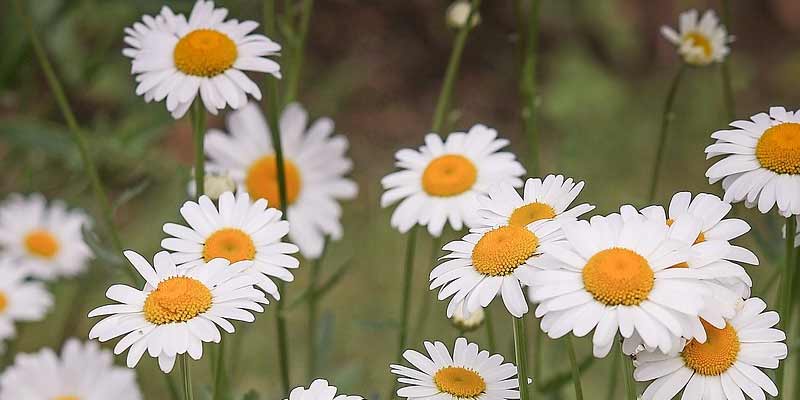Worldwide gardeners adore daisies for their simplicity and charm, manifested in cheerful blooms and vibrant colors. These resilient perennials—whimsical touches to gardens, borders, and containers alike—are a favored choice among both beginner and experienced horticulturists. However; ensuring optimal growth and blooming necessitates precise timing of the daisy planting: this is essential.
This comprehensive guide delves into three key aspects: the optimal timing for planting daisies, available varieties – an exploration that spans across a spectrum of colors and sizes; expert tips – cultivated over years of experience – specifically catered to enhance your garden with these delightful flowers.
Understanding Daisies
The Asteraceae family claims ownership of daisies, a diverse group of flowering plants renowned for their unique daisy-like blooms. Among these are prevalent species such as Shasta daisies (Leucanthemum x superbum), English daisies (Bellis perennis), and African daisies (Osteospermum). Exhibiting an array of colors like white, yellow, pink, and purple; these vibrant blossoms grace our landscapes from spring until autumn—species-dependently so.
3 Factors Influencing Planting Time
1. Climate and Hardiness Zones
The climate of your region and the hardiness zone in which you live influence the timing for planting daisies. Daisies flourish across a broad spectrum of climates: from cool temperate zones to warm subtropical regions. When you understand your local hardiness zone, it is easier to determine an appropriate planting time for optimal growth and blooming; thus enhancing their aesthetic appeal.
2. Growing Season and Frost Sensitivity
Generally cool-season perennials, daisies can tolerate light frost; they favor cooler temperatures. In regions with hot, humid summers, despite their hardiness, these flowers may struggle. By planting them in early spring or late summer, we give the daisies an opportunity to establish roots before extreme weather conditions set in.
3. Variety-Specific Considerations
Specific preferences regarding temperature, sunlight, and soil conditions exist in various daisy varieties. For instance, Shasta daisies favor well-draining soil under full sun exposure; however, English daisies can tolerate moister conditions with a partial shade cover. To achieve successful growth, it is imperative to comprehend the specific requirements of your planted daisy variety.
Ideal Planting Time
Spring Planting (March to May)
Many regions find spring an opportune season for planting daisies: during this time, they establish roots and adapt to their new surroundings before summer’s heat arrives.
Thus, aim to plant your daisies in the early to mid springs; take action once you’re confident that all threats of frost have passed and soil temperatures are suitably warm.
Fall Planting (September to October)
Daisies also thrive in regions boasting mild climates and relatively gentle winters; therefore, fall planting proves suitable. By strategically sowing these dainty blooms during late summer or early autumn – a time when temperatures begin to cool but remain amiable – they secure root establishment before the harshness of winter sets in.
This approach provides an advantageous head start for their subsequent blooming come spring.
Year-Round Planting in Mild Climates
Daisies find suitable year-round planting conditions in regions featuring mild winters and relatively consistent temperatures. However, it remains prudent to circumvent extreme weather patterns even within these forgiving climates; moreover, providing ample water and care during the initial establishment period is essential for optimal growth, a precaution always worth heeding.
Optimizing Growth Conditions
Site Selection
Select a planting site that should feature well-draining soil and bask in ample sunlight. Most daisy varieties thriving best under full sun or partial shade will excel in organically enriched soil. To stave off fungal diseases’ development, guarantee robust air circulation around your plants.
Soil Preparation
Incorporate organic matter like compost or well-rotted manure to prepare the soil. Fertile, loamy soil that retains moisture without becoming waterlogged is what daisies prefer; thus, it’s essential to work towards creating a planting bed with a depth of about 6 to 8 inches – loose and well-aerated.
Planting Depth and Spacing
Ensure you plant the daisies at their original depth in the nursery containers, and space multiple plants as per specific variety recommendations. Proper spacing which fosters adequate air circulation and mitigates overcrowding that may induce disease or impede growth is crucial.
Watering
Thoroughly water the newly planted daisies to ensure soil settlement around their roots. Especially during their first few months post-planting, provide consistent moisture. Although relatively drought-tolerant once established, healthier growth and superior flowering in daisies result from regular watering.
Mulching
To enhance soil moisture retention, suppress weeds, and regulate soil temperature: apply a layer of mulch around daisy plants. Additionally, during extreme weather conditions—mulching provides an invaluable protective barrier for the roots; furthermore, it aids in maintaining consistent moisture levels within the soil.
Harvesting the Beauty of Daisies
Typically, one does not harvest daisies in the traditional sense; instead, they are appreciated for their vibrant blooms and cheerful presence in gardens. Encouraging continuous flowering and preventing self-seeding – characteristics found in some varieties – can be achieved by deadheading spent flowers.
Allow daisies to bloom and illuminate your garden throughout the growing season, thus providing you with their beauty.
4 Expert Tips for Daisy Planting
1. Choose Resilient Varieties
Choose daisy varieties: ensure they suit your climate and growing conditions. Prioritize disease-resistant options; these demand minimal maintenance, yet offer long-lasting blooms.
2. Support for Tall Varieties
Shasta daisies, among other varieties of daisies, often grow tall; their stems may require support to avert bending or breaking. Therefore: early in the season, install stakes or plant supports for optimal growth and stability.
3. Deadheading for Continued Bloom
Regularly deadhead spent flowers to foster continuous blooming in the growing season. By removing these withered blooms, not only do you deter the plant from expending energy on seed production; but also encourage new blossoms’ development.
4. Division for Maintenance
Over time, overcrowding and a decline in bloom quality may necessitate the division of daisy clumps to sustain their vigor. In early spring or fall; therefore, one must divide these daisy clumps every few years—making sure each division possesses healthy roots and an ample growing space.
Conclusion
To ensure healthy growth, abundant blooms, and enduring beauty in your garden: plant daisies at the optimal time. Consider factors such as climate; variety-specific requirements; and recommended planting times to create an enchanting display of daisies that will brighten your outdoor space throughout the growing season.
Whether you opt for spring or fall planting—a choice yielding cheerful blooms and vibrant color. Rest assured, joy and delight will permeate your garden landscape thanks to these delightful flowers. Happy planting!



Leave a Reply